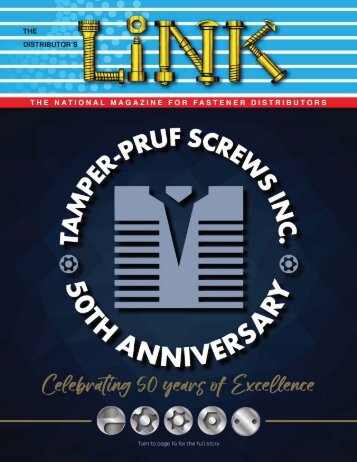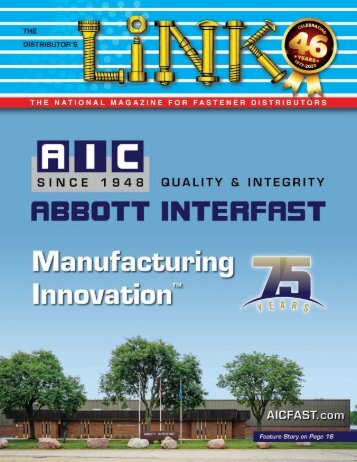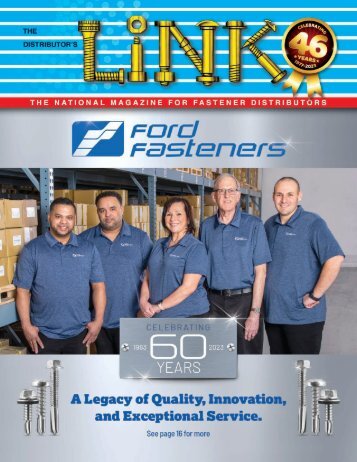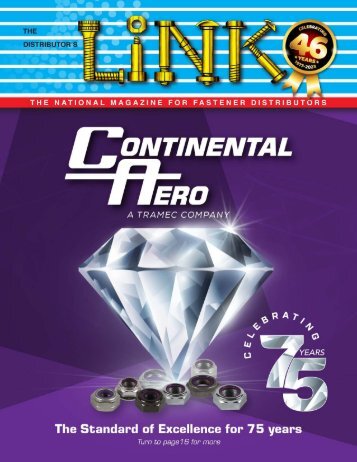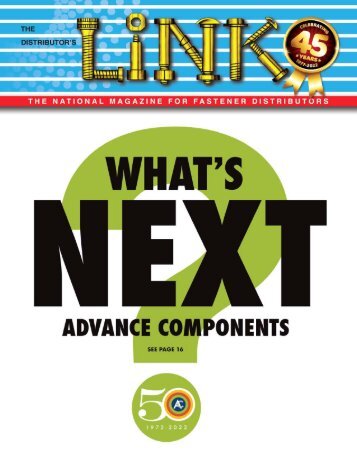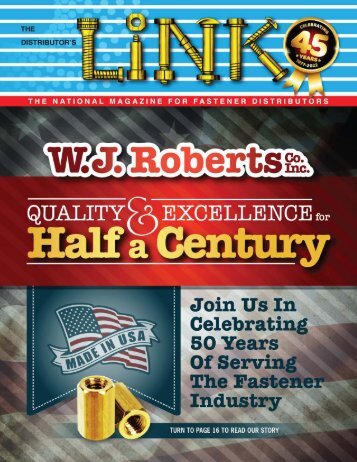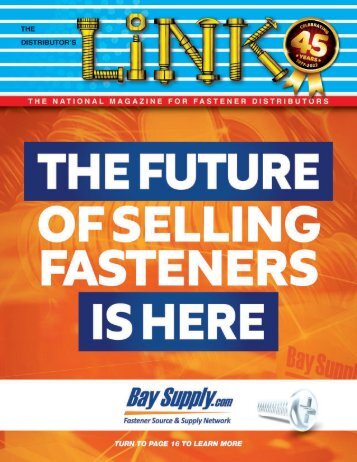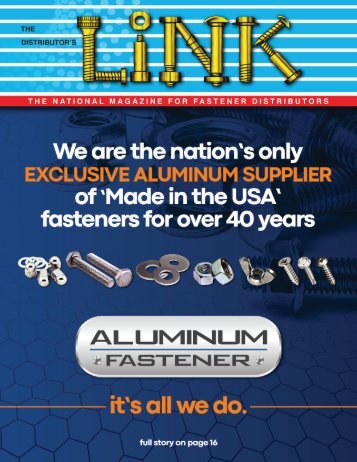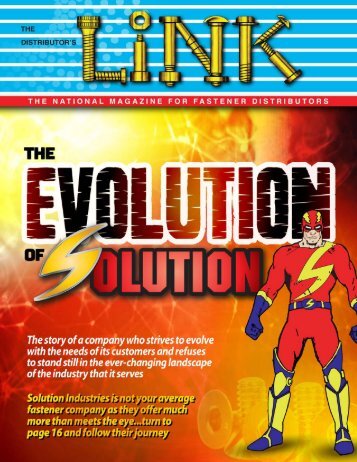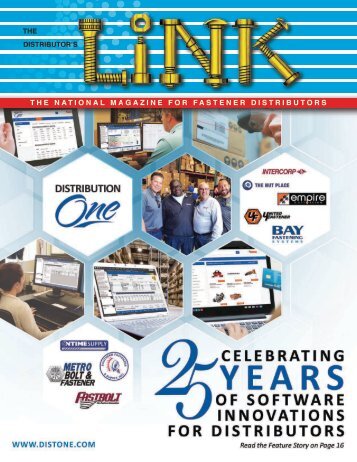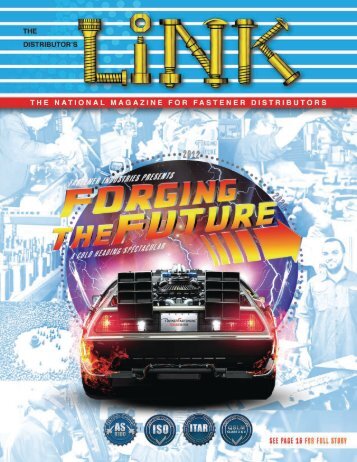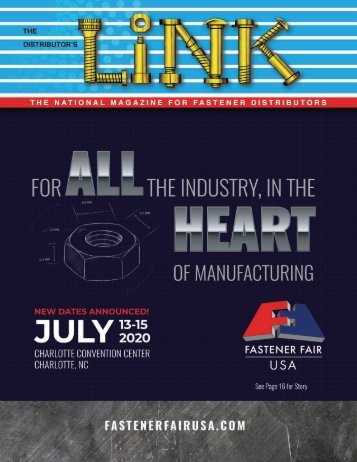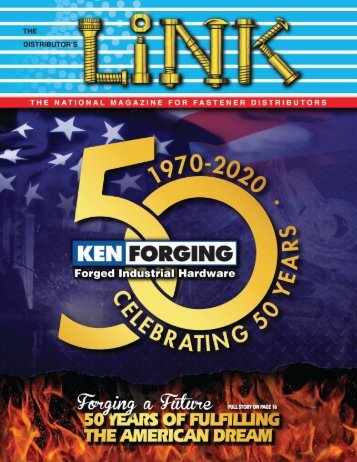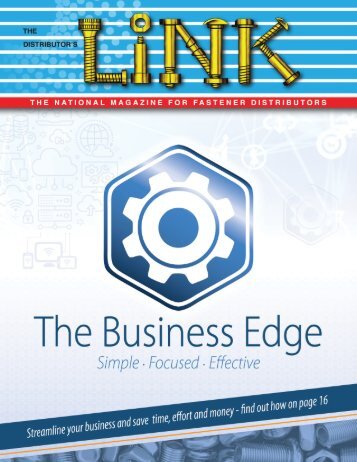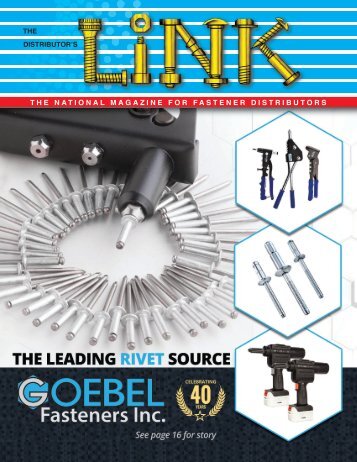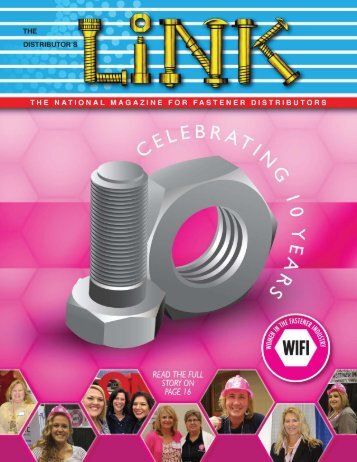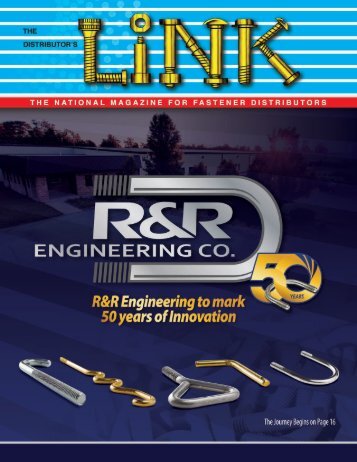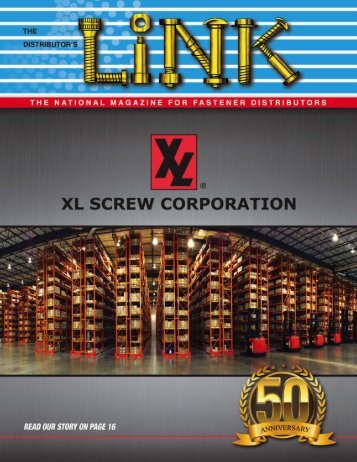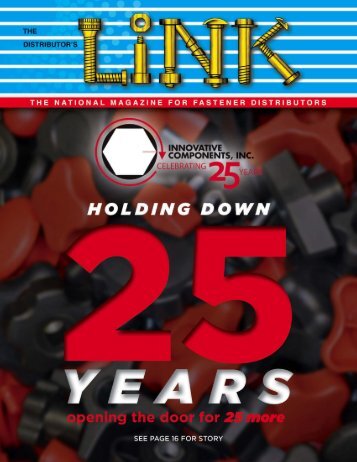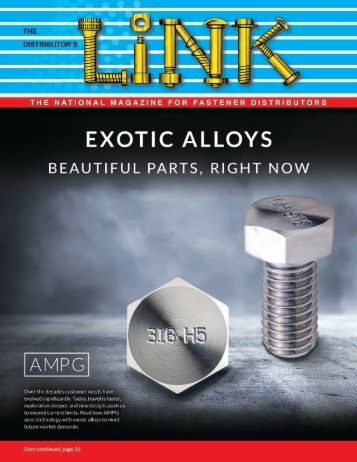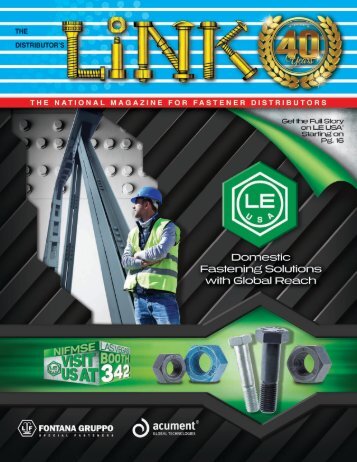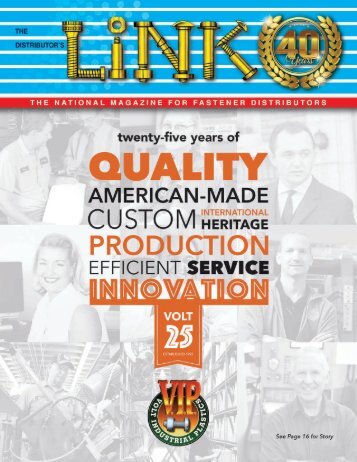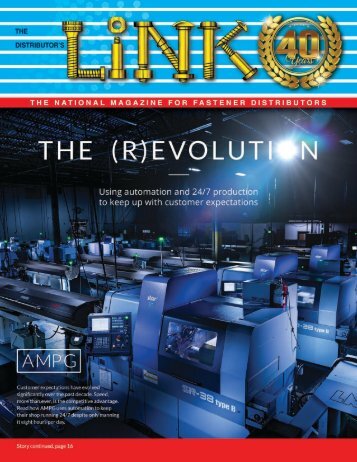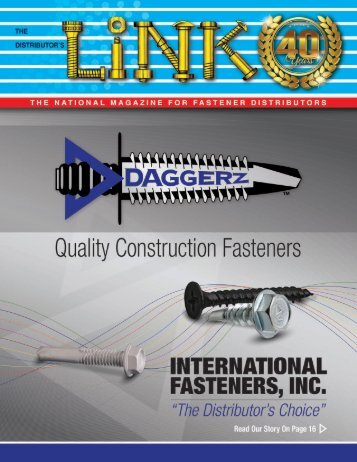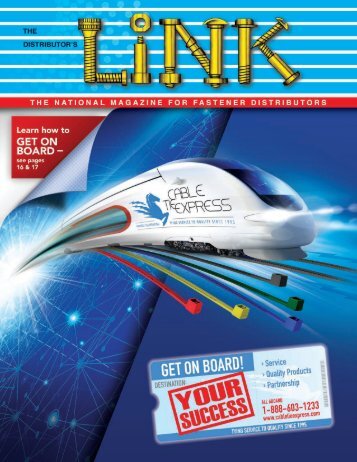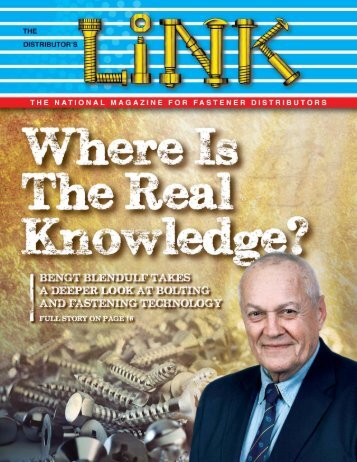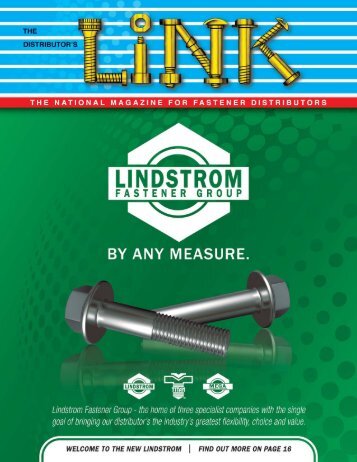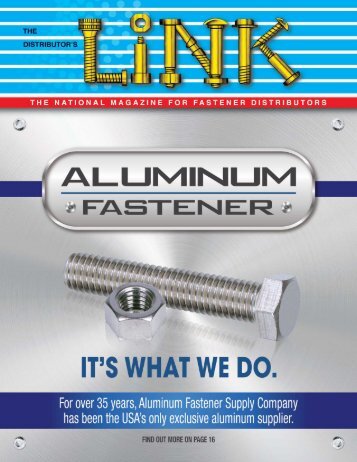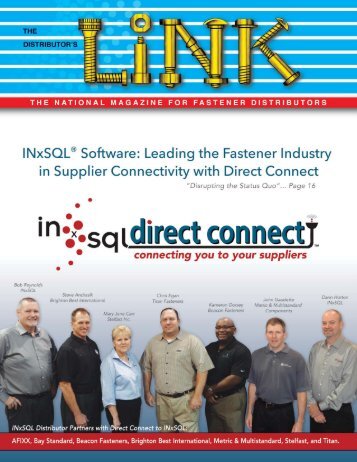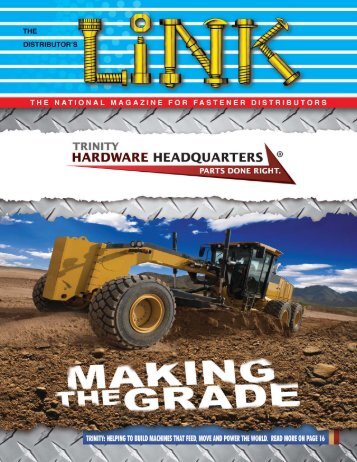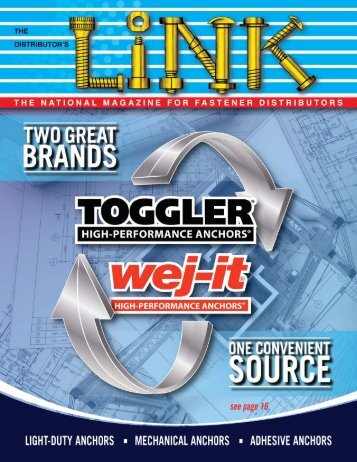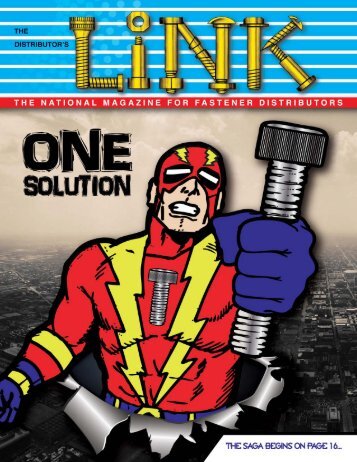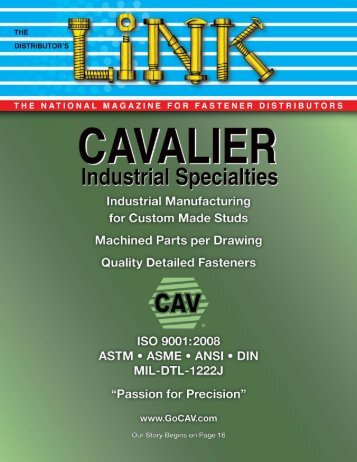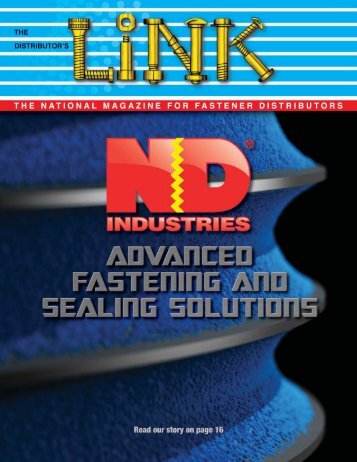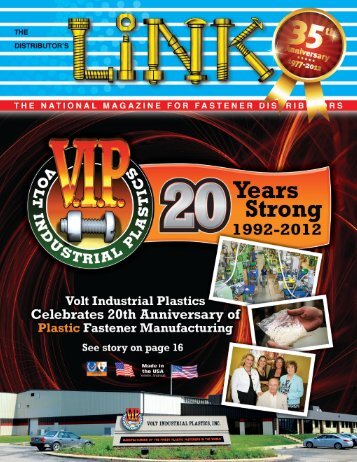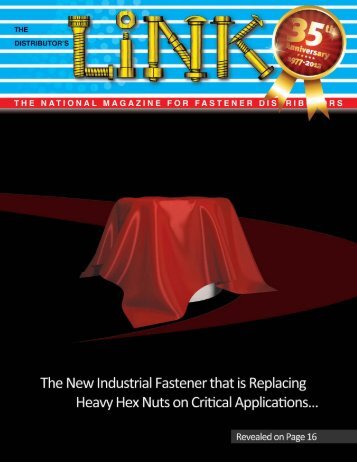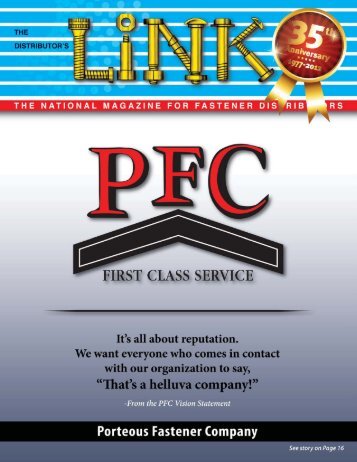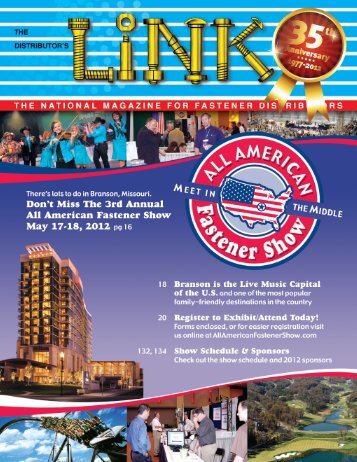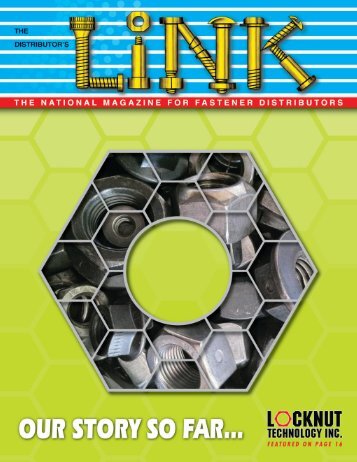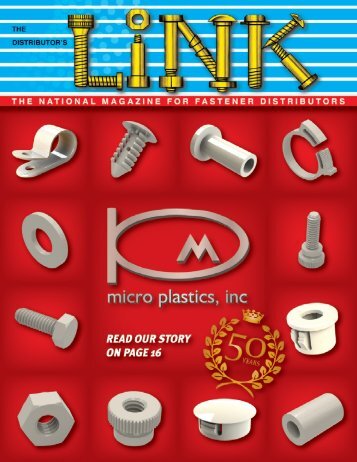FALL 2021
- Text
- Wwwgraphikacreativecom
- Bolts
- Screws
- Pins
- Joints
- Products
- Distributors
- Magnetic
- Continued
- Fasteners
- Fastener
44 THE DISTRIBUTOR’S
44 THE DISTRIBUTOR’S LINK ALL-PRO FASTENERS INC. 1916 Peyco Drive North, Arlington, TX 76001 TEL 1-800-361-6627 EMAIL sales@apf.com WEB www.apf.com FASTENING vs WELDING: FABRICATING BETTER JOINTS Introduction Welding is a proven method of securing infrastructurerelated and fabricated metal joints, and is often the preferred method in a wide range of applications. However, welding it is not without drawbacks that can affect its suitability for a number of applications. As an alternative to welded joints, engineered fasteners can provide significant time and cost advantages, depending on specific project factors and design requirements. When evaluating whether welding or fastening is best for a particular installation, a variety of factors must be considered. In the final analysis, the type of joint to be specified and fabricated depends on project factors as well as operational preferences. Project factors that guide the selection of joint type include: the weldability of the materials to be fastened (including surface coatings that may be affected by heat), joint types, installation processes and logistics, inspection requirements, cost, labor availability, accessibility, environmental conditions, safety, and future maintenance/repair considerations. Any or all of these variables can be a potential factor in deciding whether to fasten or weld a joint. This paper will discuss some primary considerations involved in choosing between welded joints or fastened joints, or some combination of both. By taking these factors into consideration, design engineers, project managers, fabrication supervisors, and construction management can make design and joining decisions that improve performance, increase safety and productivity, and control costs, while meeting and exceeding performance requirements over the lifecycle of the project. Welding Overview The process of welding creates permanent joints by fusing two elements with extreme heat, then allowing them to cool in a fixed position. Various types of joint configurations, such as butt-, corner-, edge-, lap-, and tee-welded joints, are determined by the position of welded elements relative to one another. Welding is a manual process that is typically performed by certified welders using specialized equipment. Specific energy sources may also be required, depending on the type of weld being performed. Workplace safety is important regardless of joint type, but welding comes with more task-specific risks. In shielded metal arc welding (SMAW), an electric arc is produced between a coated metal electrode and the steel components to be welded. Precautions must be undertaken to avoid burns, vision damage, fume or gas inhalation, radiation exposure, electric shock, and/or fires. TECHNICAL ARTICLE CONTINUED ON PAGE 124
- Page 6 and 7: in the Fall 2021 issue of 6 DISTRIB
- Page 8: 6 THE DISTRIBUTOR’S LINK Pivot Po
- Page 12: 10 THE DISTRIBUTOR’S LINK Bruno M
- Page 16: 14 THE DISTRIBUTOR’S LINK SPECIAL
- Page 28: 26 THE DISTRIBUTOR’S LINK Guy Ave
- Page 32: 30 THE DISTRIBUTOR’S LINK Larry B
- Page 36 and 37: 34 THE DISTRIBUTOR’S LINK Joe Dys
- Page 38: 36 THE DISTRIBUTOR’S LINK Laurenc
- Page 41 and 42: All Integrated Solutions (AIS), a d
- Page 48: 46 THE DISTRIBUTOR’S LINK Jim Tru
- Page 51 and 52: THE DISTRIBUTOR’S LINK 49
- Page 53 and 54: MID-WEST FASTENER ASSOCIATION TABLE
- Page 55 and 56: MW COMPONENTS TEL 203-888-2133 EMAI
- Page 58 and 59: 56 THE DISTRIBUTOR’S LINK Martin
- Page 60 and 61: 58 THE DISTRIBUTOR’S LINK NATIONA
- Page 62 and 63: 60 THE DISTRIBUTOR’S LINK SOLUTIO
- Page 64 and 65: 62 THE DISTRIBUTOR’S LINK ENGINEE
- Page 66: 64 THE DISTRIBUTOR’S LINK Anthony
- Page 69 and 70: THE DISTRIBUTOR’S LINK 67 SPIROL
- Page 72: 70 THE DISTRIBUTOR’S LINK Abigail
- Page 75 and 76: THE DISTRIBUTOR’S LINK 73 The Aut
- Page 78 and 79: 76 THE DISTRIBUTOR’S LINK NORTH C
- Page 80 and 81: 78 THE DISTRIBUTOR’S LINK INDUSTR
- Page 82: 80 THE DISTRIBUTOR’S LINK
- Page 85 and 86: THE DISTRIBUTOR’S LINK 83
- Page 88: 86 THE DISTRIBUTOR’S LINK Interna
- Page 92: MID-WEST FASTENER ASSOCIATION TABLE
- Page 95 and 96:
NYLOK THE DISTRIBUTOR’S LINK 93 1
- Page 100 and 101:
MID-WEST FASTENER ASSOCIATION 68th
- Page 102 and 103:
100 THE DISTRIBUTOR’S LINK ROB La
- Page 104:
102 THE DISTRIBUTOR’S LINK BRUNO
- Page 107 and 108:
THE DISTRIBUTOR’S LINK 105 CHRIS
- Page 109 and 110:
SPECIALTY SALES REPS THE DISTRIBUTO
- Page 111 and 112:
THE DISTRIBUTOR’S LINK 109 The Gi
- Page 114:
112 THE DISTRIBUTOR’S LINK FASTEN
- Page 118 and 119:
MID-WEST FASTENER ASSOCIATION 68th
- Page 120 and 121:
118 THE DISTRIBUTOR’S LINK JOE DY
- Page 122:
120 THE DISTRIBUTOR’S LINK LAUREN
- Page 126:
124 THE DISTRIBUTOR’S LINK ALL-PR
- Page 129 and 130:
THE DISTRIBUTOR’S LINK 127
- Page 131 and 132:
MID-WEST FASTENER ASSOCIATION 75th
- Page 133:
THE DISTRIBUTOR’S LINK 131 NATION
- Page 137 and 138:
THE DISTRIBUTOR’S LINK 135 SMALLE
- Page 139 and 140:
THE DISTRIBUTOR’S LINK 137 NELSON
- Page 141 and 142:
THE DISTRIBUTOR’S LINK 139 ENGINE
- Page 144 and 145:
142 THE DISTRIBUTOR’S LINK SPIROL
- Page 146 and 147:
144 THE DISTRIBUTOR’S LINK BATCHI
- Page 148 and 149:
146 THE DISTRIBUTOR’S LINK ABIGAI
- Page 150 and 151:
148 THE DISTRIBUTOR’S LINK LEN La
- Page 152 and 153:
OPEN HOUSE - JULY 8, 2021
- Page 154 and 155:
fastenerlinks THE DEFINITIVE WEB DI
- Page 156 and 157:
fastenerlinks BRINGING YOU THE FAST
- Page 158:
fastenerlinks BRINGING YOU THE FAST
- Page 161 and 162:
THE DISTRIBUTOR’S LINK 159 LARRY
- Page 163 and 164:
MID-WEST FASTENER ASSOCIATION MIXER
- Page 166 and 167:
164 THE DISTRIBUTOR’S LINK JOE DY
- Page 168 and 169:
166 THE DISTRIBUTOR’S LINK LAUREN
- Page 170 and 171:
168 THE DISTRIBUTOR’S LINK ALL-PR
- Page 172 and 173:
170 THE DISTRIBUTOR’S LINK ROBERT
- Page 174 and 175:
172 THE DISTRIBUTOR’S LINK ROB La
- Page 176:
174 THE DISTRIBUTOR’S LINK BRUNO
- Page 179 and 180:
NCFA 12th ANNUAL DISTRIBUTOR SOCIAL
- Page 181 and 182:
MID-WEST FASTENER ASSOCIATION 75th
- Page 183 and 184:
MID-WEST FASTENER ASSOCIATION 75th
- Page 185 and 186:
THE DISTRIBUTOR’S LINK 183 ALL-PR
- Page 188:
advertisers index # 3Q, INC. 83 Was
- Page 192:
advertisers index I INDUSTRIAL RIVE
Inappropriate
Loading...
Mail this publication
Loading...
Embed
Loading...
|
SHARE A PAGE FROM THIS MAGAZINE OPTION 1: Click on the share tab above, or OPTION 2: Click on the icon (far right of toolbar) and then click on the icon (far right of toolbar) and then click on the  icon (top right of the page). icon (top right of the page).
|
View Archives
Copyright © Distributor's Link, Inc. All Rights Reserved | Privacy Policy







